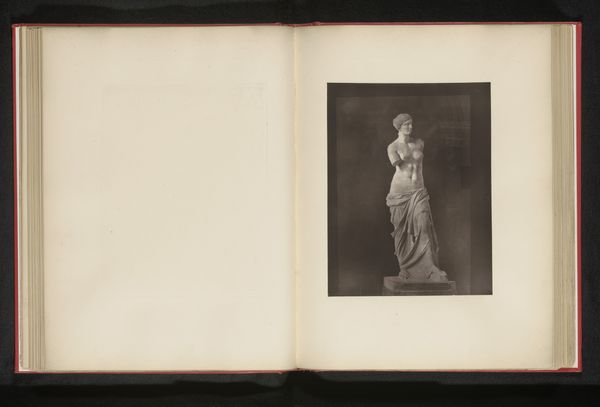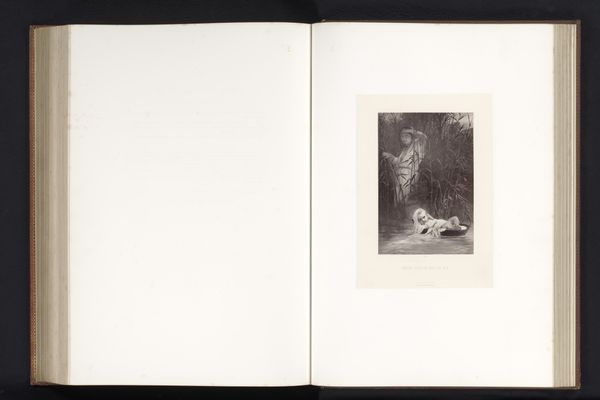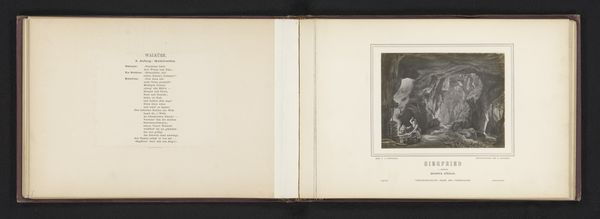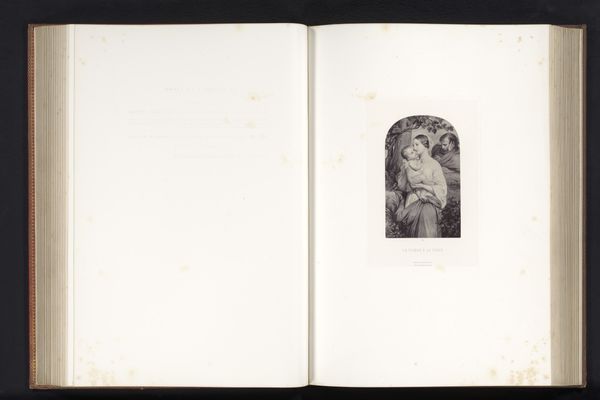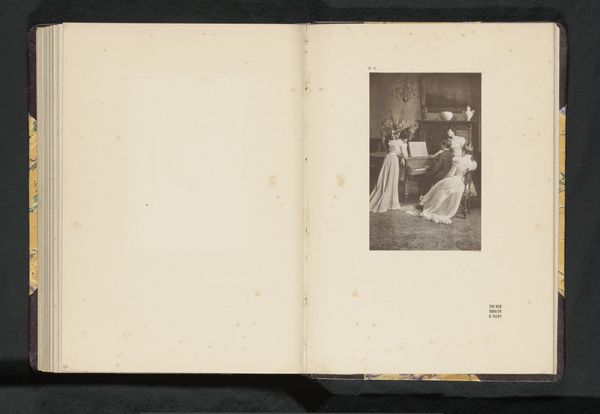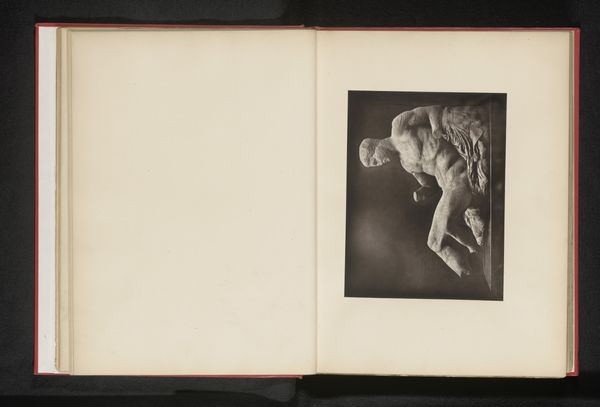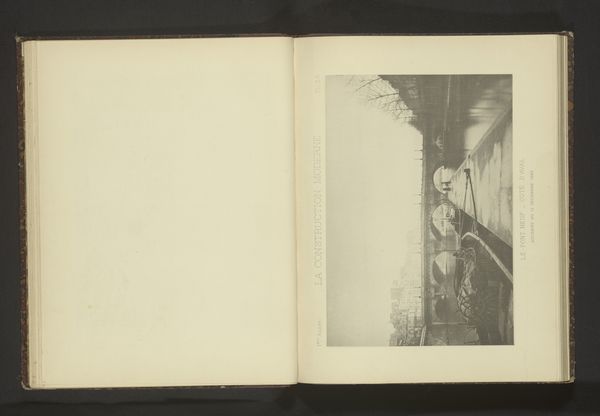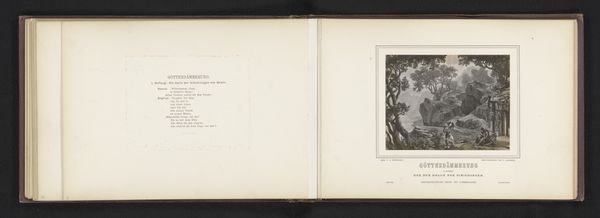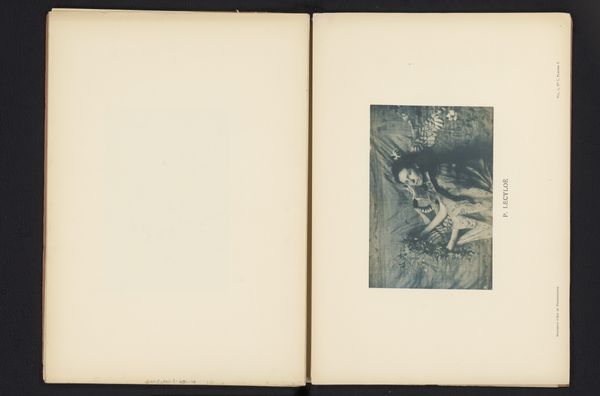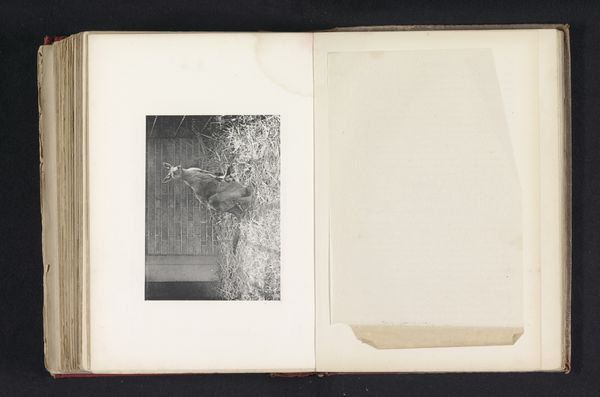
drawing, paper, photography, pencil
#
portrait
#
drawing
#
aged paper
#
homemade paper
#
paper non-digital material
#
paperlike
#
paper texture
#
paper
#
photography
#
personal sketchbook
#
pencil
#
folded paper
#
thick font
#
paper medium
#
realism
#
historical font
Dimensions: height 149 mm, width 57 mm
Copyright: Rijks Museum: Open Domain
Curator: Here we have "Halfnaakte vrouw in wit kleed," a work from before 1905 by René Le Bègue. It seems to be a reproduction within a bound volume, rendered with photography and pencil on paper. What’s your initial take on this image? Editor: Stark and oddly contained. It’s this black and white photograph isolated on the page of an aged sketchbook that creates a contemplative mood for me. She seems both exposed and strangely protected by the materiality of the page itself. Curator: Absolutely. There's an intriguing interplay between vulnerability and perhaps idealized presentation. I am captivated by the rendering of fabric—how it both conceals and reveals, functioning as a visual cipher in representations of femininity throughout art history. It could recall draped vestals and sacred statues, perhaps hinting at purity, sacrifice or a figure awaiting divine union? Editor: Yes! It almost stages an argument about those concepts. Look at how the sketch quality contrasts with classical idealization. Her gaze doesn’t quite meet ours and there’s a sense of incompleteness here that stops her from embodying those earlier tropes uncritically. It challenges those older iconographies by acknowledging the actual human form that lives underneath the ideals. Curator: Interesting point. And to build on that—notice the aged paper. To me, this element underscores memory and historical lineage; perhaps it comments on how ideals of womanhood are filtered through a specific lens, evolving but eternally present. Editor: I wonder if we’re also seeing the artist questioning representation more broadly. He deliberately refrains from presenting her directly; there is an awareness of how woman have been observed by the male gaze and an effort to present a modern vision where she is at odds with objectification. It acknowledges the tensions within the act of looking itself. Curator: A poignant and thoughtful reading, reframing my own encounter. This has given me a richer understanding of both the woman depicted and Le Bègue's broader artistic goals. Editor: Indeed. And I, too, see new symbolic resonance within the aged paper that underscores history's role in shaping identity.
Comments
No comments
Be the first to comment and join the conversation on the ultimate creative platform.
